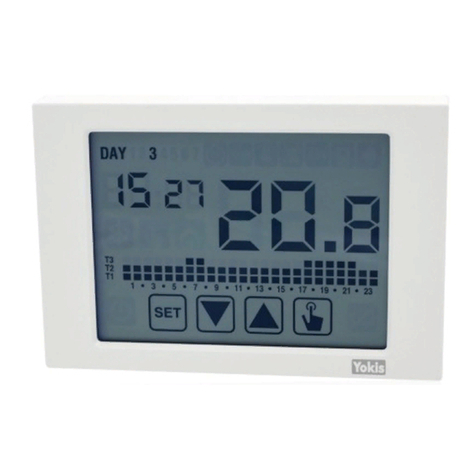
INDEX
1. GENERAL DESCRIPTION...................................................................................................................................4
1.1. MAIN FEATURES.........................................................................................................................................4
1.2. DIMENSIONS ..............................................................................................................................................4
1.3. DESCRIPTION OF TERMINALS ..................................................................................................................4
1.4. DESCRIPTION OF COMPONENTS ............................................................................................................5
2. AUTOMATIC OPERATION.................................................................................................................................6
3. MANUAL OPERATION ......................................................................................................................................6
4. SWITCH FROM AUTOMATIC TO MANUAL OPERATION AND VICE VERSA .................................................7
5. OFF OPERATION...............................................................................................................................................8
6. MINIMUM AND MAXIMUM VALUES ................................................................................................................8
7. CONFIGURATION MODE .................................................................................................................................9
7.1. TIME AND DATE ................................................................................................................................10
7.1.1. Changing the daylight saving time settings ...................................................................................10
7.2. EDIT PROGRAMS ................................................................................................................................11
7.3. CHANGE TEMPERATURES (T1), T2, T3 ..............................................................................................12
7.4. SETTING A TIMER ...............................................................................................................................13
7.4.1. Manual timed ..................................................................................................................................13
7.4.2. Automatic timed .............................................................................................................................13
7.4.3. Off timed.........................................................................................................................................13
7.5. ADVANCED CONFIGURATION MENU ..............................................................................................14
7.5.1. Operating mode..............................................................................................................................16
7.5.2. Adjustment mode type for heating ................................................................................................16
7.5.3. Adjustment parameters ..................................................................................................................16
7.5.3.1. On/off adjustment ................................................................................................................17
7.5.3.2. Proportional adjustment TPI (1) (warm-up only) ..................................................................17
7.5.3.3. Emergency control (winter operation only)..........................................................................18
7.5.4. Antifreeze temperature ..................................................................................................................19
7.5.5. Auxiliary input management ...........................................................................................................19
7.5.6. Keypad locking password ...............................................................................................................19
7.5.7. Hours of system operation .............................................................................................................19
7.5.8. View SW version..............................................................................................................................20
7.5.9. View HW version .............................................................................................................................20
7.6. RADIO-FREQUENCY MENU ...............................................................................................................20
7.6.1. RF Test.............................................................................................................................................22
7.6.2. Configuration reception from AppPRO..........................................................................................22
7.6.3. Rec E5 : Connection to one MRT module.......................................................................................22
7.6.4. Ap E7 : Access point definition.......................................................................................................23
7.6.5. Def 24 : Erase access points ...........................................................................................................23
7.6.6. Def 25 : Thermostat wireless configuration reset ..........................................................................23
8. REMOTE SWITCH-OFF ....................................................................................................................................24
9. THERMOSTAT RESET ......................................................................................................................................24
10. INSTALLATION ................................................................................................................................................24
10.1. SAFETY WARNING .................................................................................................................................24
10.2. HOW TO START THE THERMOSTAT.....................................................................................................24
10.3. CONNECTIONS ......................................................................................................................................28
10.4. CONFIGURATIONS.................................................................................................................................29
10.4.1. Single-zone thermostat configuration with direct wiring.............................................................29
10.4.2. Single-zone thermostat configuration with wireless connection (via MTR) and check ................29
10.4.3. How to extend the range..............................................................................................................30




























